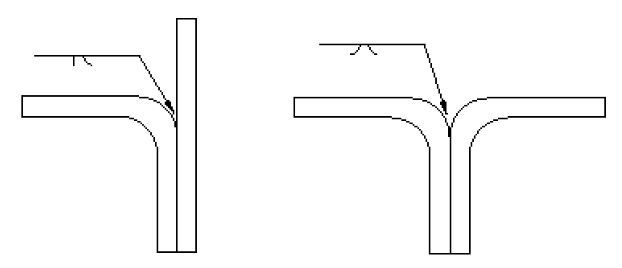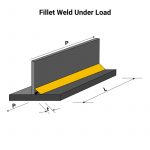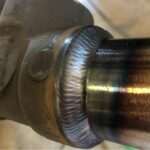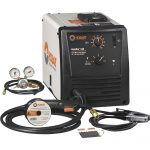A flare bevel weld is one that connects a radius to a planar surface. For example, the weld between a flat bar and a piece of pipe along its side. In this article, you will learn what a flare bevel weld is, some examples of its use, and the flare bevel weld vs other types of welds.
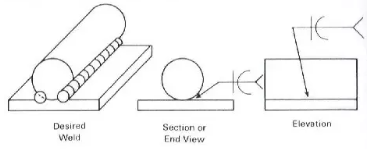
Examples
Generally, flare bevel welds are ideal for connections involving tubular members and flat surfaces. Moreover, they are on a variety of structures, especially on T-K-Y joints. Also, this type of joint is common on offshore structures and requires out-of-position welding with fillet, partial joint penetration (PJP) groove welds, or full penetration welds. When using a PJP groove weld, the flare bevel is a suitable option because the nature of the joints suits it as the diagram below highlights.
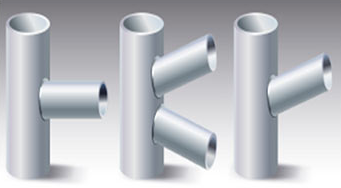
Apart from its use in joining load-bearing members of a structure, they also serve as a stop in mechanical parts.
Other Types of Welds
There are several methods to pick from when welding a joint. But to choose the appropriate method, it is necessary to compare the features of welding types. This section focuses on comparing these features.
Flare Bevel vs Bevel
Generally, both weld types share numerous similarities in appearance and welding procedure. However, there is a basic difference between the two. Flare bevel welds refer to the fusion of joints between curved and plane surfaces. While bevel weld is the fusion between two plane surfaces. So, in summary, a flare bevel weld is a subset of bevel welds.
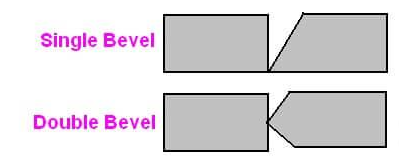
In addition, it is necessary to differentiate between these two types of welds on an engineering drawing or weld map. Thus, the figure below indicates the uniqueness of their symbols.
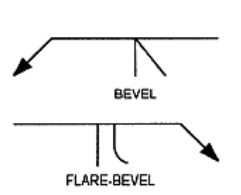
Flare Bevel vs Fillet
In some ways, both types of welds appear similar. However, they are inherently different as the table below highlights.
| Flare Bevel Weld | Fillet Weld |
| Requires edge preparation by butting a groove into one of the materials. | Can be done as a surface weld without any edge preparation. |
| It is for joints between a curved and a flat surface. | It is for joints between two flat surfaces. |
| The depth of the groove is the key parameter in this method. So, the larger the strength requirement, the deeper the groove. | For fillet welds, the key parameters are the size and length of the weld. Applications with large strength requirements need longer welds. While multiple passes achieve larger weld sizes. |
| Because of the need for surface preparation and more filler material, it requires more time, cost, and expertise. | It is more economical and quicker to achieve. Time and cost savings are significant when making several joints. |
| Better for high-strength applications. | Suitable when the design loads on the joints are less. |
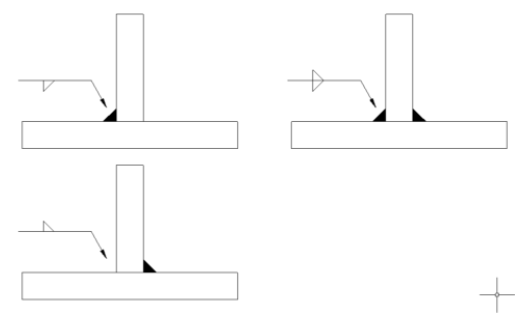
Flare Bevel vs Flange Corner
Similarly, a flange corner also serves to connect members where one has a curved surface, and the other is flat. However, there are differences which the table below highlights.
| Flare Bevel Weld | Flange Corner Weld |
| The weld is at the joint where the curved surface meets the flat surface. | Even though it is joining a curved object to another with a flat surface, the weld is at the edge where both surfaces are flat. |
| Can serve for a variety of joints such as butt, lap, and t-joints. | Ideal for only edge or corner joints. |
| For applications with thicker plates or more strength requirements, double grooves can be used. | Because flange corner welds are limited to edge or corner joints, only single grooves can serve. |
| The possibility of using double grooves makes this ideal to meet applications with higher strength demands. | Due to its limitation to single grooves, this method is suitable for applications with lesser strength requirements. Although, the deployment of filler metal to reinforce the plates can serve for some heavier applications. |
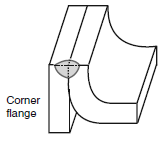
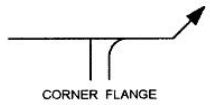
Flare Bevel Weld vs Flare V-Groove Weld
The flare v-groove is another variation of groove welds with several similarities with the flare bevel weld. But the fundamental difference is that flare v-groove welds involve two convex surfaces at a joint. While for flare bevel welds, it is one plane surface and one convex surface making up the joint.

